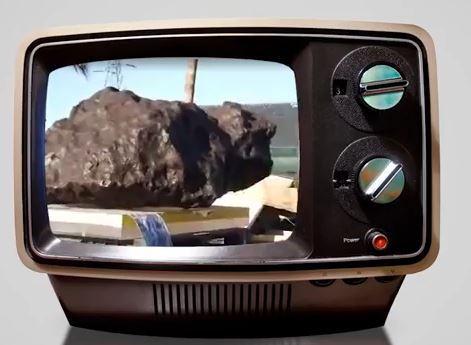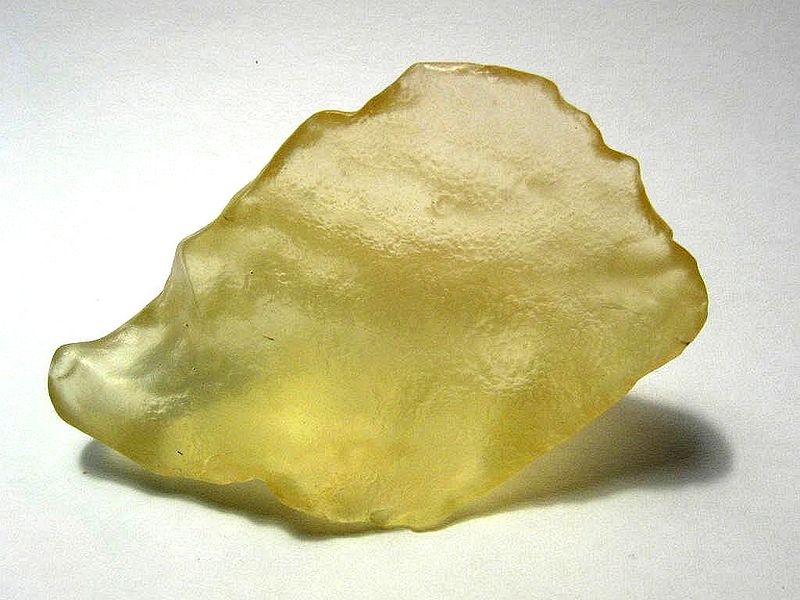How exciting it is to think that you might have a real meteorite on your hands?! Something that is not of this earth, how cool is that?! Well, for a Geo-Geek like me that’s some pretty exciting shiz…let me tell you! Amber from New Mexico asks me a great question:
“How do you know if you have a real meteorite? And what is your opinion on Meteorite Hunting?”
Lets start with this… How do you know if you have the real McCoy?
Real Meteorites share Certain Geological Characteristics:
- Very Dense
- Iron Rich
- Magnetic
If the meteorite has fallen to earth fairly recently it might have Fusion Crust – like an ashy appearance when it burned up coming through our atmosphere.
![When you do a streak test, is there a streak? If a streak appears, sorry Chick Pea, it is not a meteorite. Photo by Ra'ike (see also: de:Benutzer:Ra'ike) (Own work) [GFDL (http://www.gnu.org/copyleft/fdl.html) or CC BY-SA 3.0 (http://creativecommons.org/licenses/by-sa/3.0)], via Wikimedia Commons](https://hibiscusmoon.com/wp-content/uploads/2014/07/792px-Streak_plate_with_Pyrite_and_Rhodochrosite.jpg)
When you do a streak test, is there a streak? If a streak appears, sorry Chick Pea, it is not a meteorite. Photo by Ra’ike (see also: de:Benutzer:Ra’ike) (Own work) [GFDL (http://www.gnu.org/copyleft/fdl.html) or CC BY-SA 3.0 (http://creativecommons.org/licenses/by-sa/3.0)], via Wikimedia Commons
Here’s a checklist of what a true meteorite will not have:
X – no streak
X – no Quartz specks – not shiny or sparkly (I know, we do love our sparklies! but not in meteorites) 🙂
X – no holes or pores
X – probably not round (like a nice smooth rock for example, is not a meteorite)
Watch my video to learn more fun facts & crack the code on meteors:
If you’re checking-off many of the meteorite characteristics as YES, you may want to verify with an academic at a local university, museum or local rock shop.
Where can you find Meteorites?
So you want to go Meteorite hunting? The most likely places that you will find meteorites are:
- in a desert
- in a barren open field
- on an icy tundra
A few notable Metaphysical Meteorites Include:
- Libyan Desert Glass Tektite aka Gold Tektite: found on the Libyan-Egyptian border, about 26 – 29 million years old, geologists are uncertain of its origin (as is the case with most other tektites). It’s known as a powerful solar plexus chakra stone that boosts confidence, manifestation & psychic protection, access to Akashic records.
Have you ever found a meteorite or been hunting for them? Would you like to find one? Have you worked with one? I’d love to hear about your “out of this world” experience – please share in the comments below.
Happy Meteor Hunting!




How about Shungite?? 🙂
Nope, shungite is not a meteorite. It’s of this Earth. 🙂
Shungite gets its name from Shun’ga village in Russia, where a deposit was found and a specimen was extracted and described. Other names for it include “shungit,” “stone of life” and “black ochre.”
This lustrous black mineraloid consists of over 98% carbon by weight and is claimed to contain “fullerenes,” which are carbon molecules that take the forms of hollow tubes, ellipsoids, spheres or other shapes.
It is believed to be more than two billion years old and exhibits an amorphous or non-crystalline habit, an opaque transparency, a matte or metallic luster, a Mohs scale hardness of 3.5-4 and electric conductivity properties. It resembles coal and is found in the earth’s crust, among very ancient layers that formed before the existence of other life forms.
Though shungite mainly occurs in Russia, deposits have also been described in Kazakhstan, India, Austria and the Democratic Republic of Congo.
This mineraloid possesses great water purifying properties and has been used in the purification of water for the Russian army and for spas. Its antibacterial properties have also made it an effective tool in medical treatment as far back as the beginning of the 18th century. Additionally, shungite has been used as a pigment for paint (under the names “shungite natural black” and “carbon black”) and in the production of the insulating material “shungisite.”
In the metaphysical world, shungite is associated with the base or root chakra and healing and protection. As previously mentioned, springs near shungite have been used for their healing properties as far back in history as Czar Peter the Great. Bathing in, drinking, or using water purified by this crystal in the form of an elixir is said to bring about energy and healing.
Shungite is also commonly used in mystical and magical work, as it may ground spiritual energy and bring light into one’s auric energy field. It is believed to bring both physical and psychic protection, warding off negative energy and the evil eye. Wearing shungite, meditating with it and/or keeping it near seems to calm and relax everyone in its vicinity, making it a beneficial stone to keep around the house.
In the world of physical healing, shungite is regarded as a “miracle stone” and is used by crystal healers to address issues of the immune system (including the AIDS virus), skin deformations or diseases, cancer, osteoarthritis, rheumatic arthritis, kidney disease, liver disease, musculoskeletal disorders, headaches, insomnia, gastrointestinal problems, spinal problems and back pain, infections, respiratory system issues, and more. It is also believed to promote hair growth, fight free radicals, keep blood pressure at its ideal level, purify the blood, protect its wearer’s body from electromagnetic radiation, provide pain relief and rapid healing, serve as an anti-inflammatory, and have antibacterial properties. It is considered to be an extremely useful, or even downright essential, crystal to have in one’s medical bag for obvious reasons.
Shungite is a Stone of Deep Secrets
Scientists estimate the age of shungite to be almost 2 billion years. Though it is similar in appearance to coal, it is found in very ancient layers of the Earth’s crust that were formed when there were no life forms on the Earth.
Where did this strange rock come from? At that time there were no forests to form carbides such as coal. Experts claim there were only protobacteria living in an oxygen-free atmosphere. But suddenly huge deposits of this marvelous mineral seem to have appeared.
Who gave them to the man? Why? How? The answers to the first two questions are quite simple. Having foreseen the trap that man would be driven into by civilization’s “achievements,” God showed the way out. He made shungite to heal and rescue life on the earth. It is not in vain that some prophets point to the North as the place of rescue from environmental disasters. Karelia, in the north of Russia is known to have the only shungite filed in the world.
The answer to the third question comes from science. There are at least three theories to explain shungite’s origin:
Primitive microscopic organisms existed in shallow bays of the ancient sea. Sea scurf rich in these organic remains formed a material that produced shungite.
According to another rather exotic version, shungite is a part of a gigantic meteorite that brought a part of a decomposed planet called Phaeton to the Earth. Phaeton is believed to have had carbon-based life forms. The gigantic fragment brought them to earth and formed the shungite field in the area of impact.
Some researchers assert that the form and structure of shungite have volcanic features. The volcanic ejection of the shungite substance would have played the same role as the hypothetical Phaeton fragment.
Whichever of these theories may hold the truth, it cannot be disputed that shungite with its unique healing qualities and abundance of remarkable characteristics, is a mineral like nothing else on earth.
Loved the video and love the moldavite, haven’t worked with tektite before but sounds yummy. 🙂
Hope your well thanks for the videos!
Hi T!!!! Thank you. ((HUGS))
where do you purchase your crystals from?
HI Brandi!
Hibiscus Moon usually finds most of her crystals at her annual trek to Tuscon. We love and recommend Earthegy for a great online store for finding great quality crystals. http://www.earthegy.com
She’s even created a discount coupon code for all of our readers: HM10 will save you 10%
I am lucky enough that my husband has access to a metal reading gun at work and he scanned mine and it is a 100% authentic meteorite.. It’s very heavy for its size. That was one of the reasons I thought it was real… Thank you for the video, as always love the video..
Great information on this video, thanks Hibiscus Moon once again.
Sparkly blessings. 🙂
Can you please tell us more about Libyan Desert Glass?
I found a lot of LDG bracelets in the market lately. Isn’t it a kind of rare meteorite?
Thanks from HK.